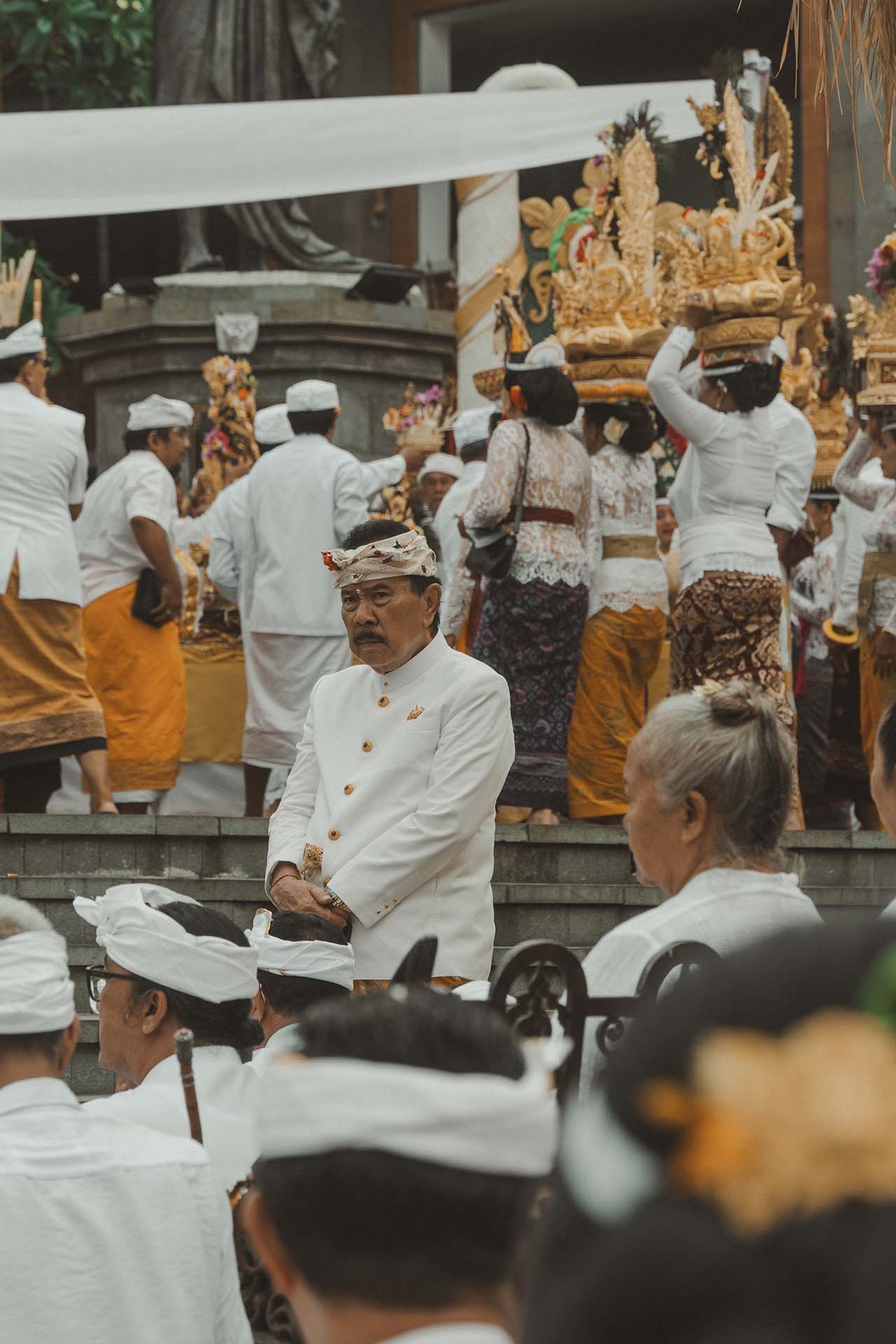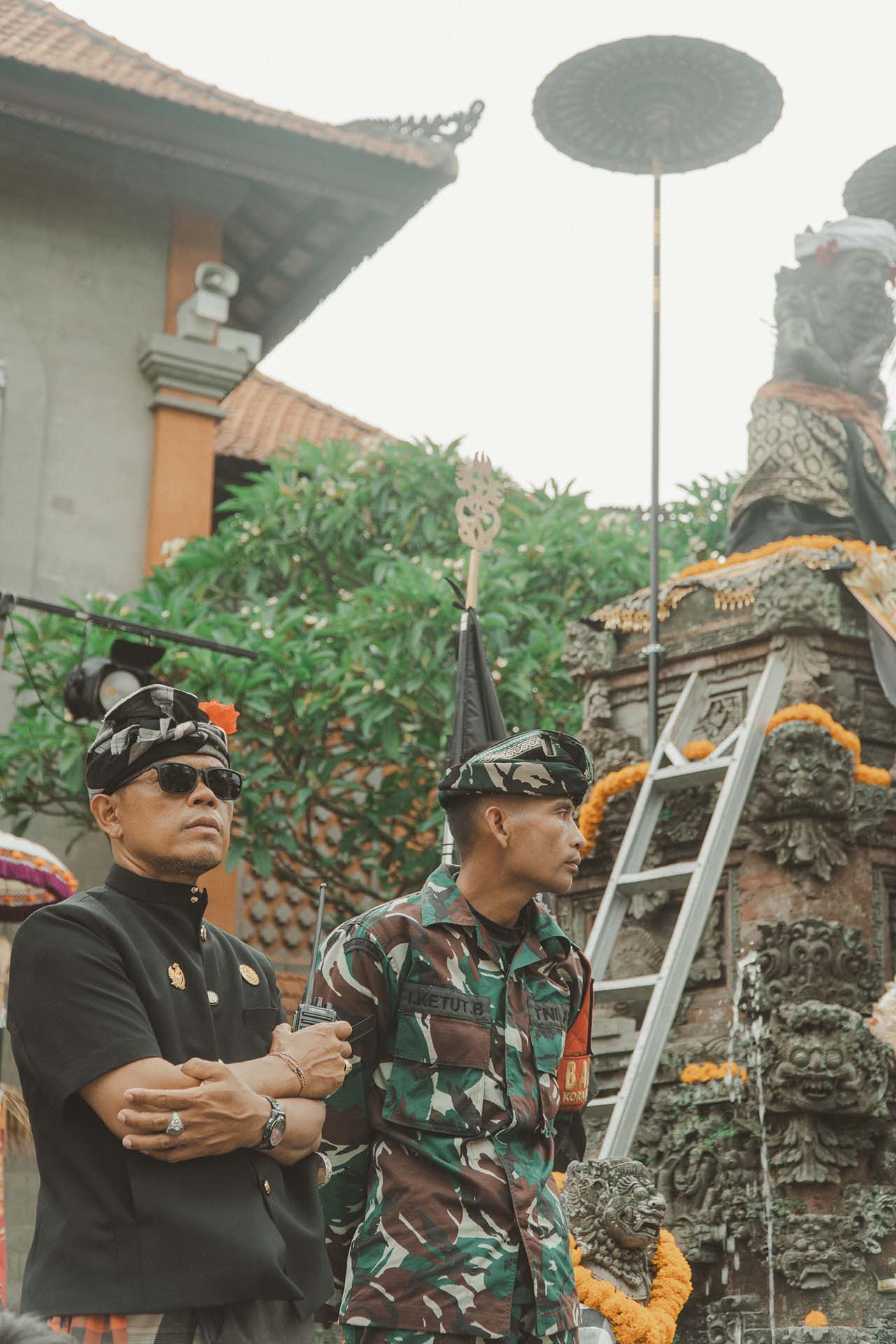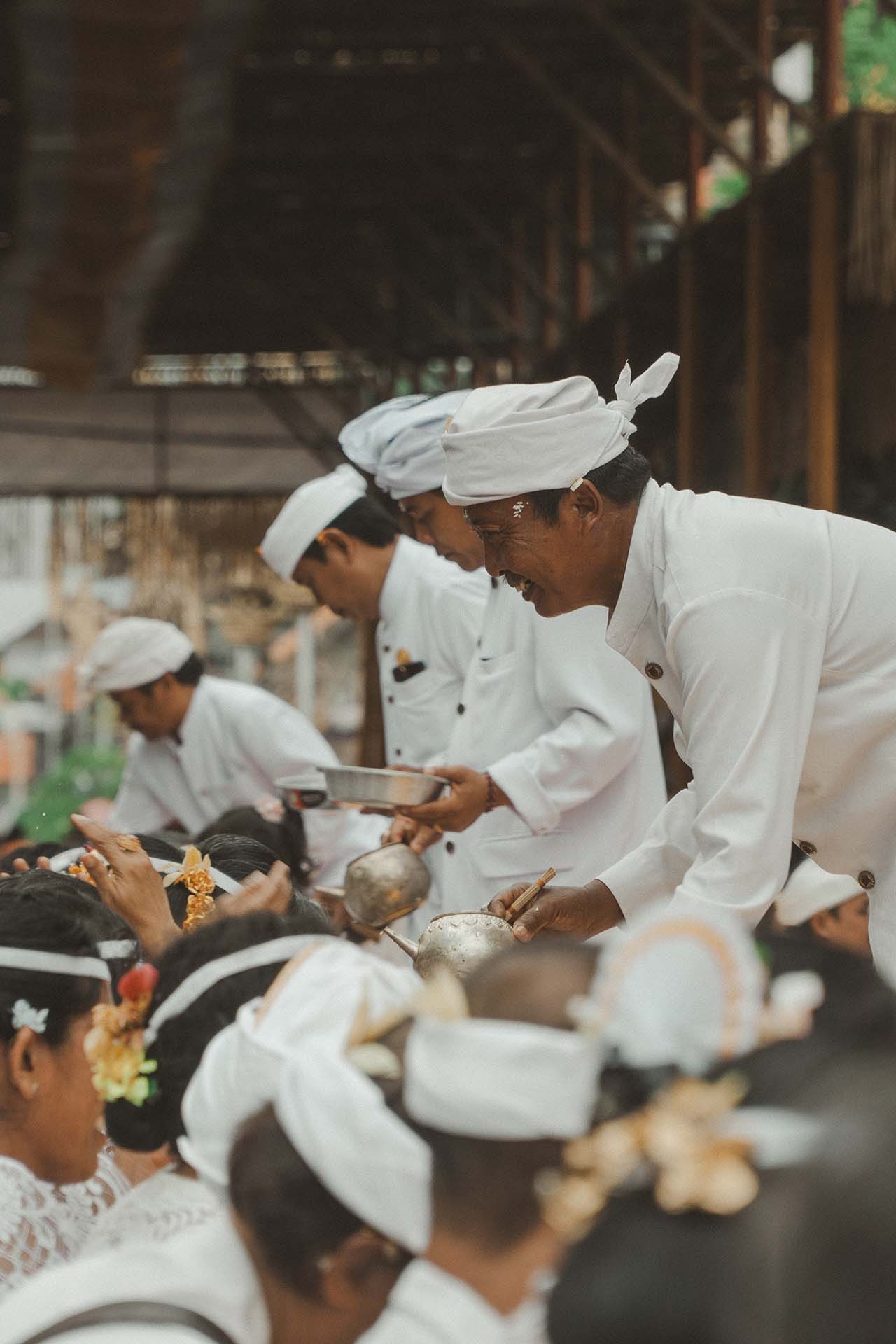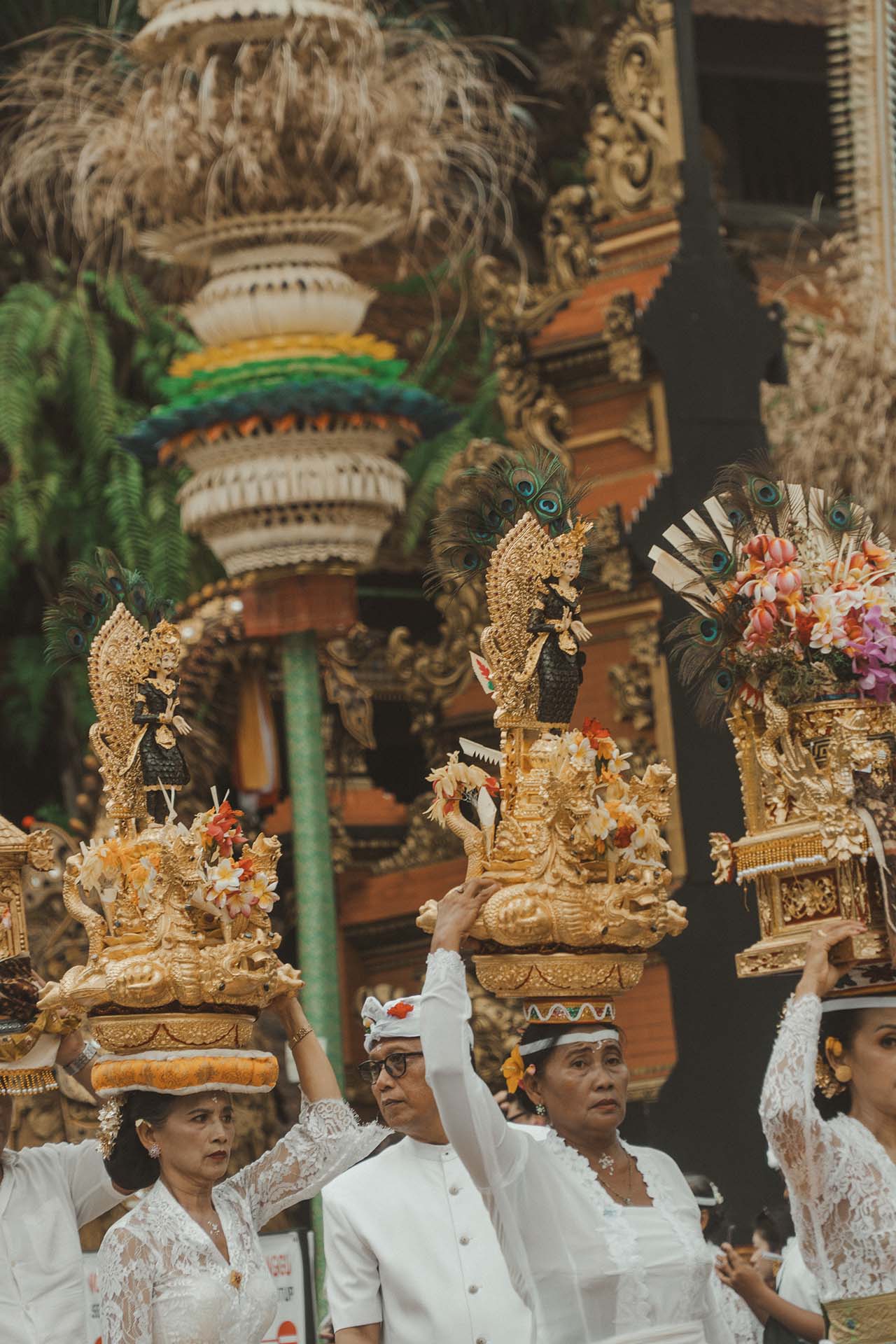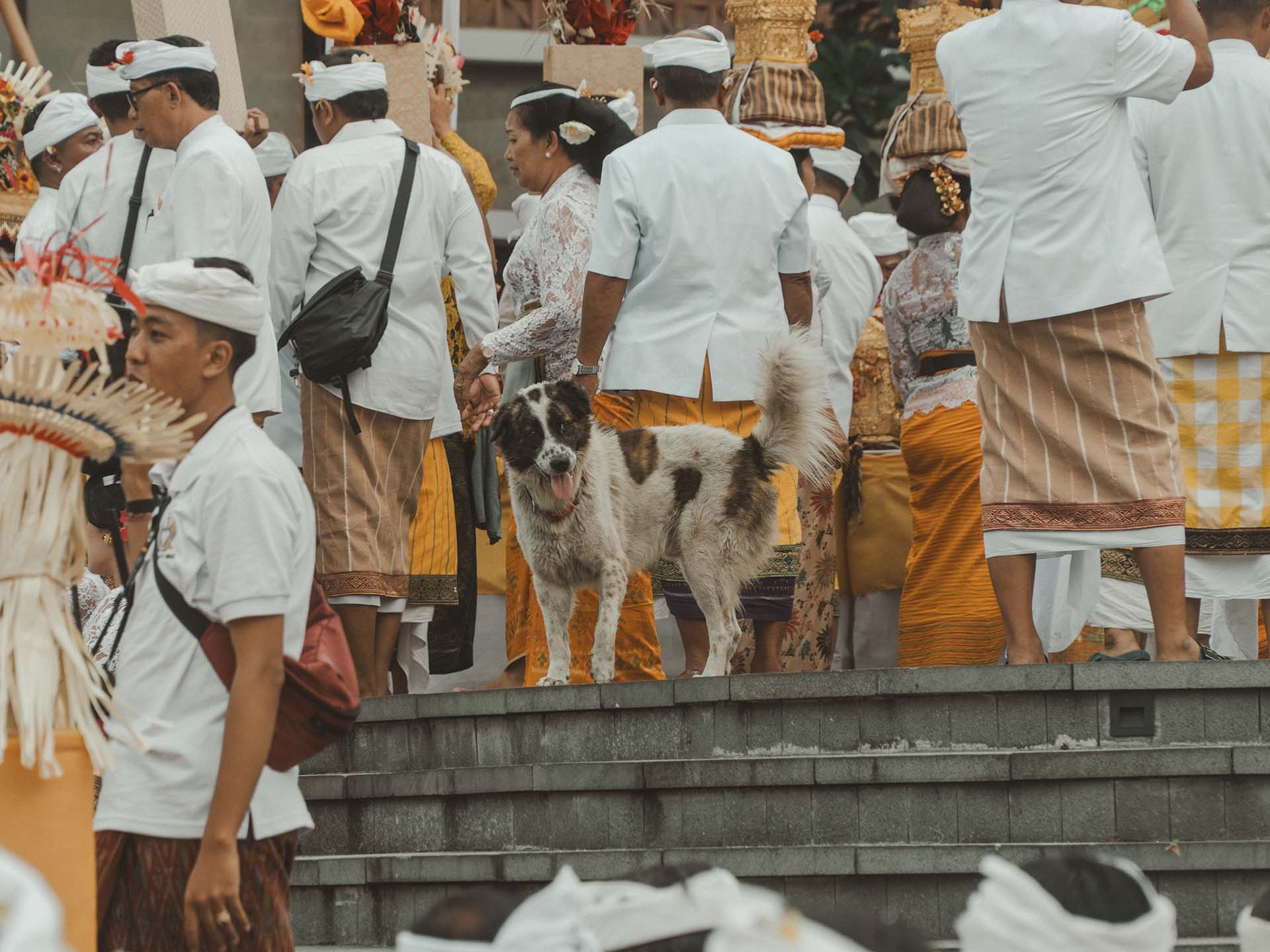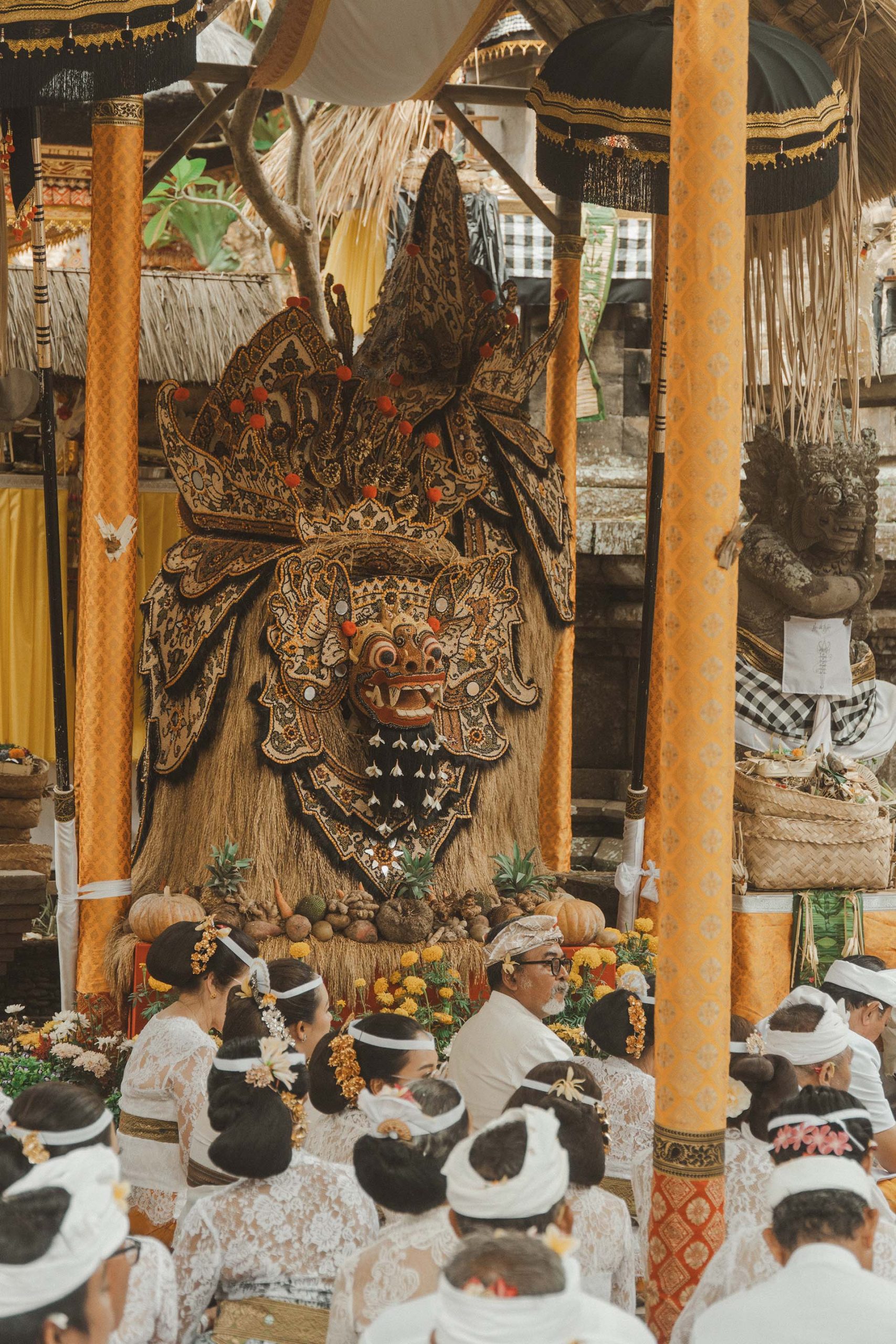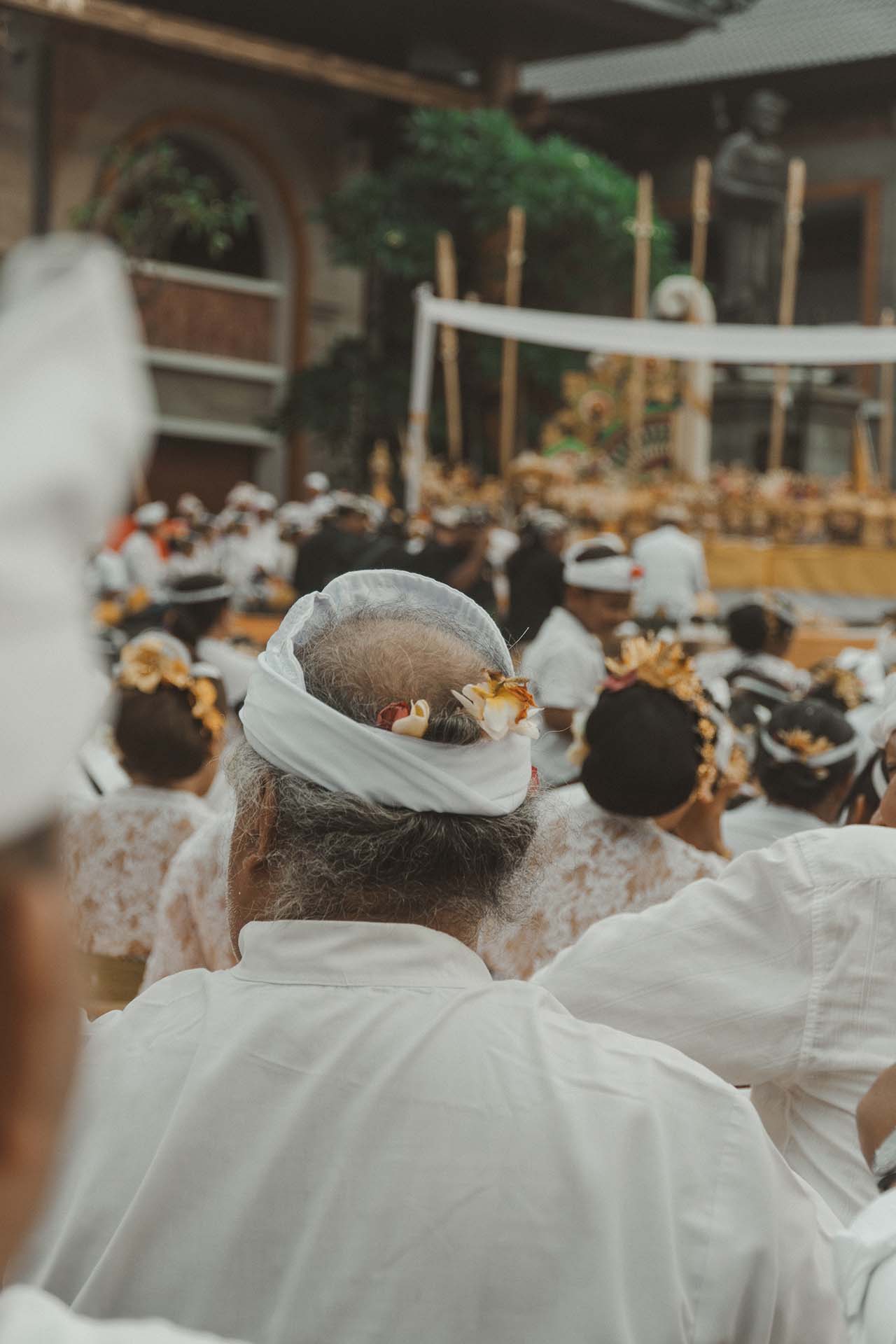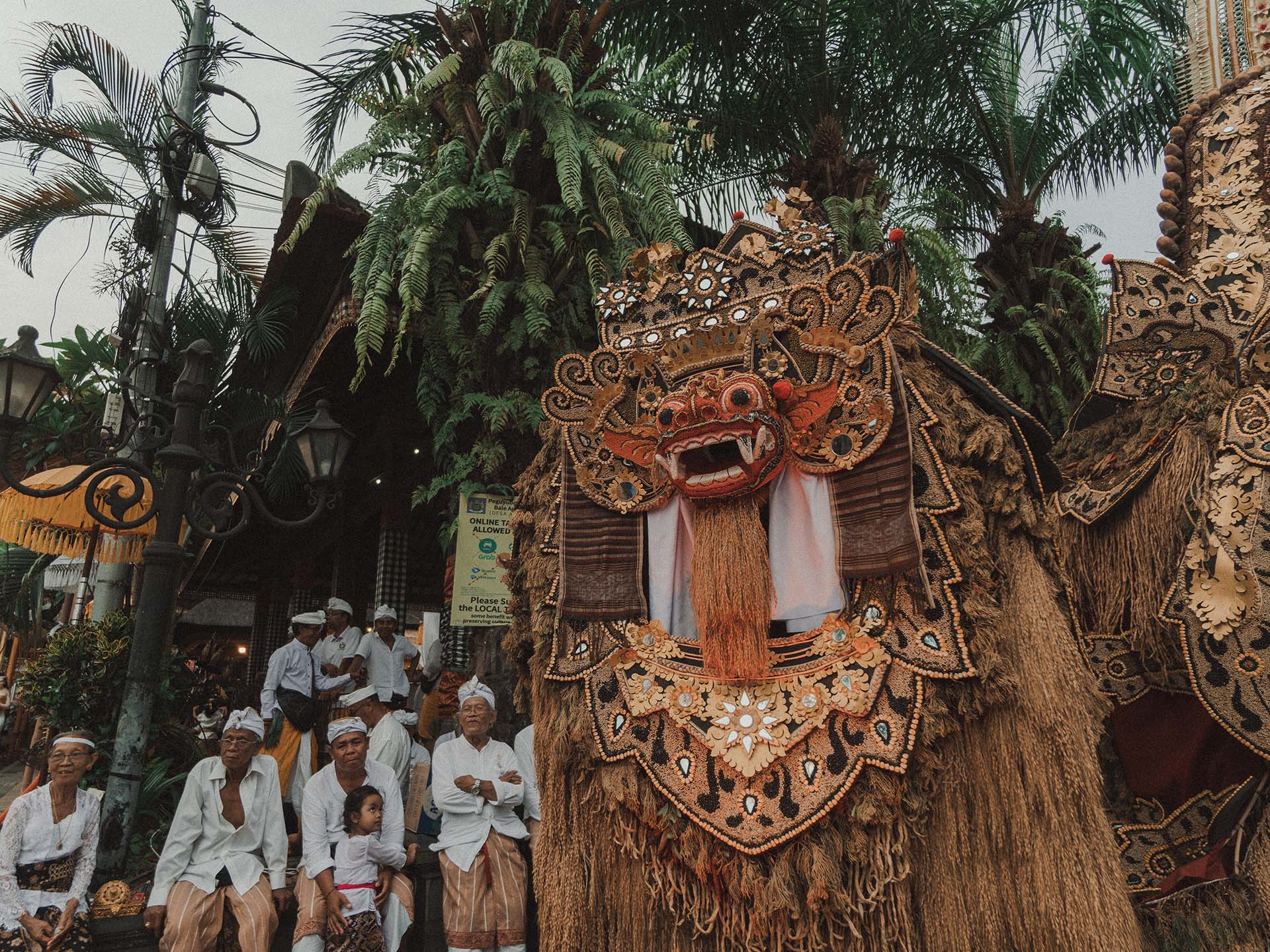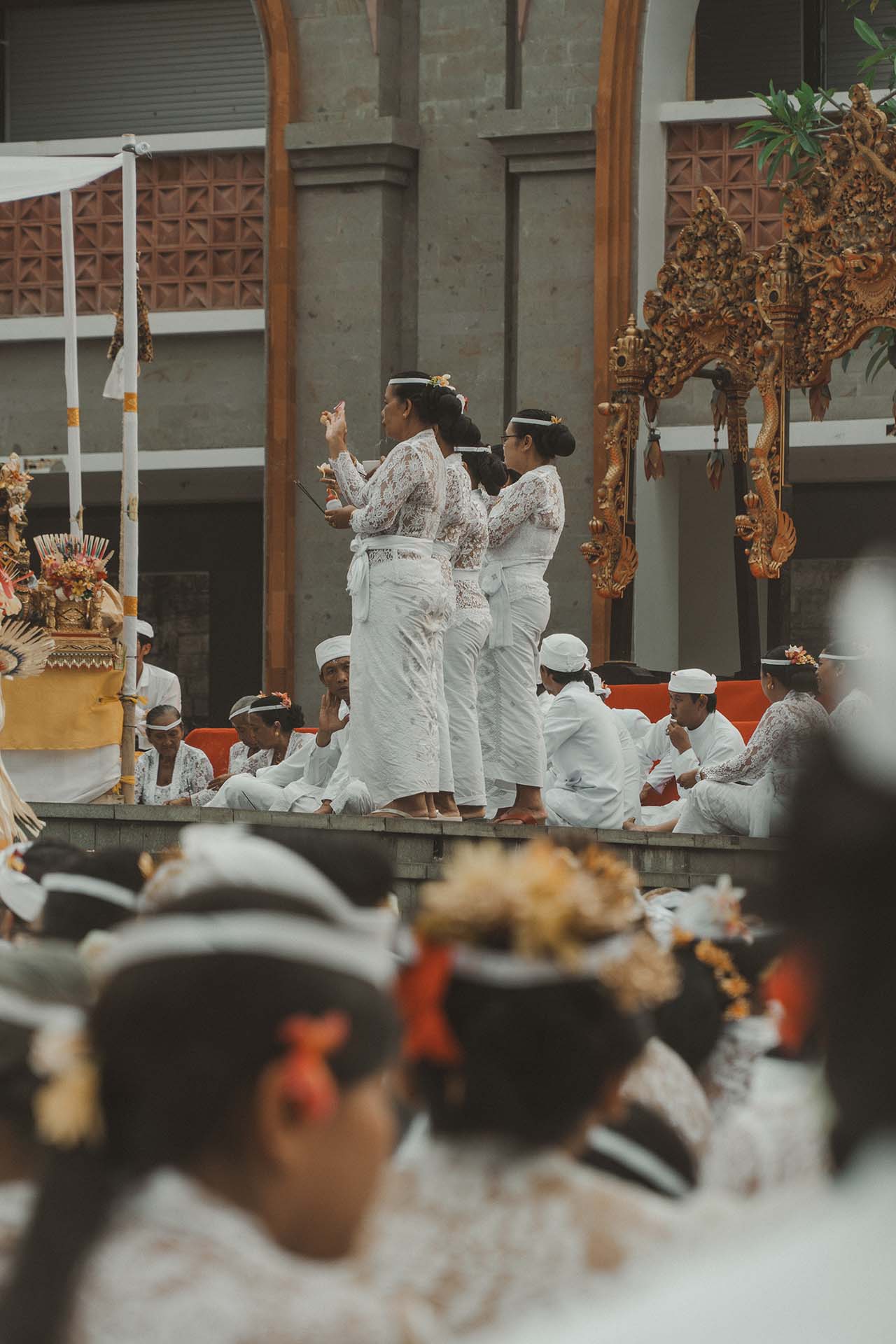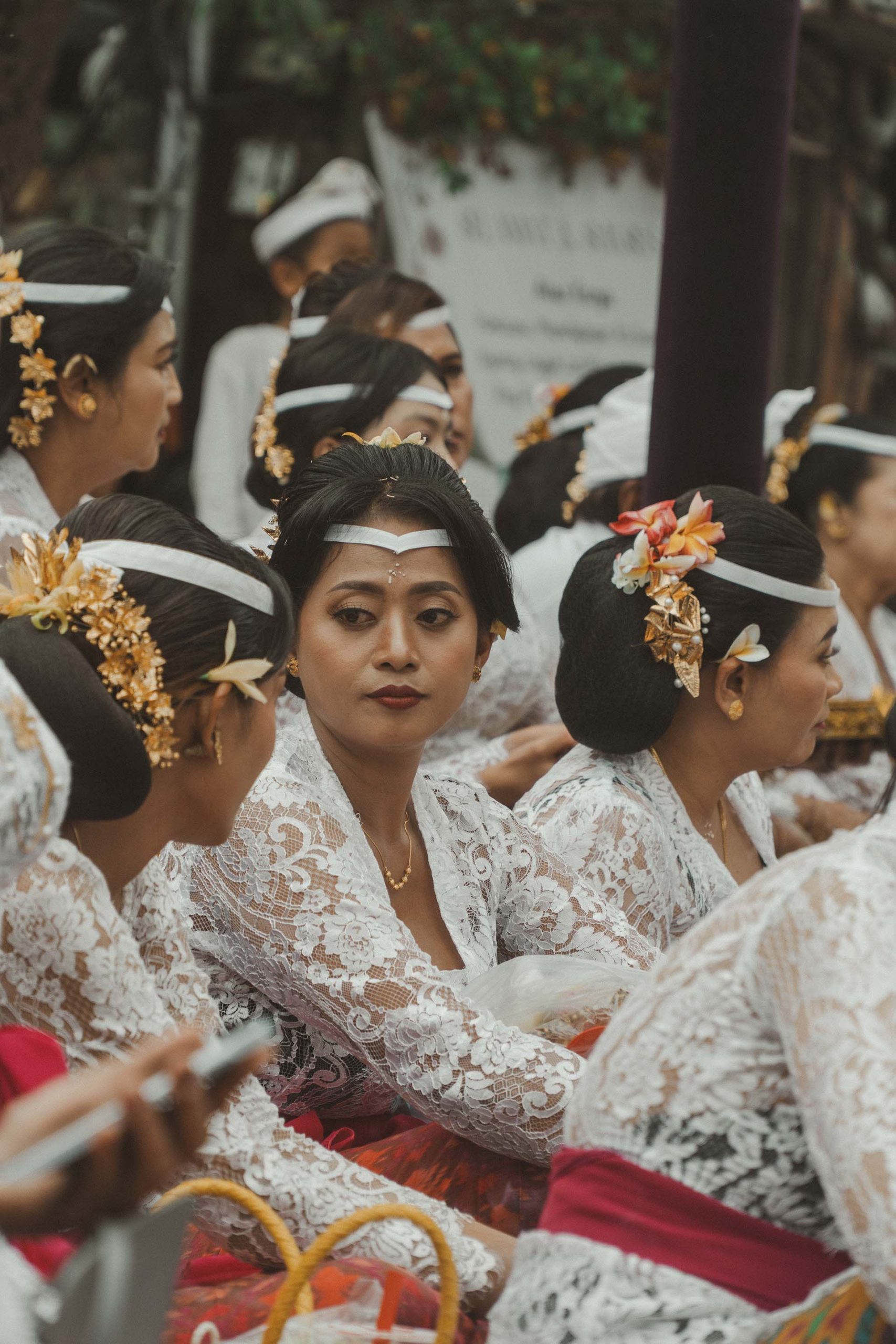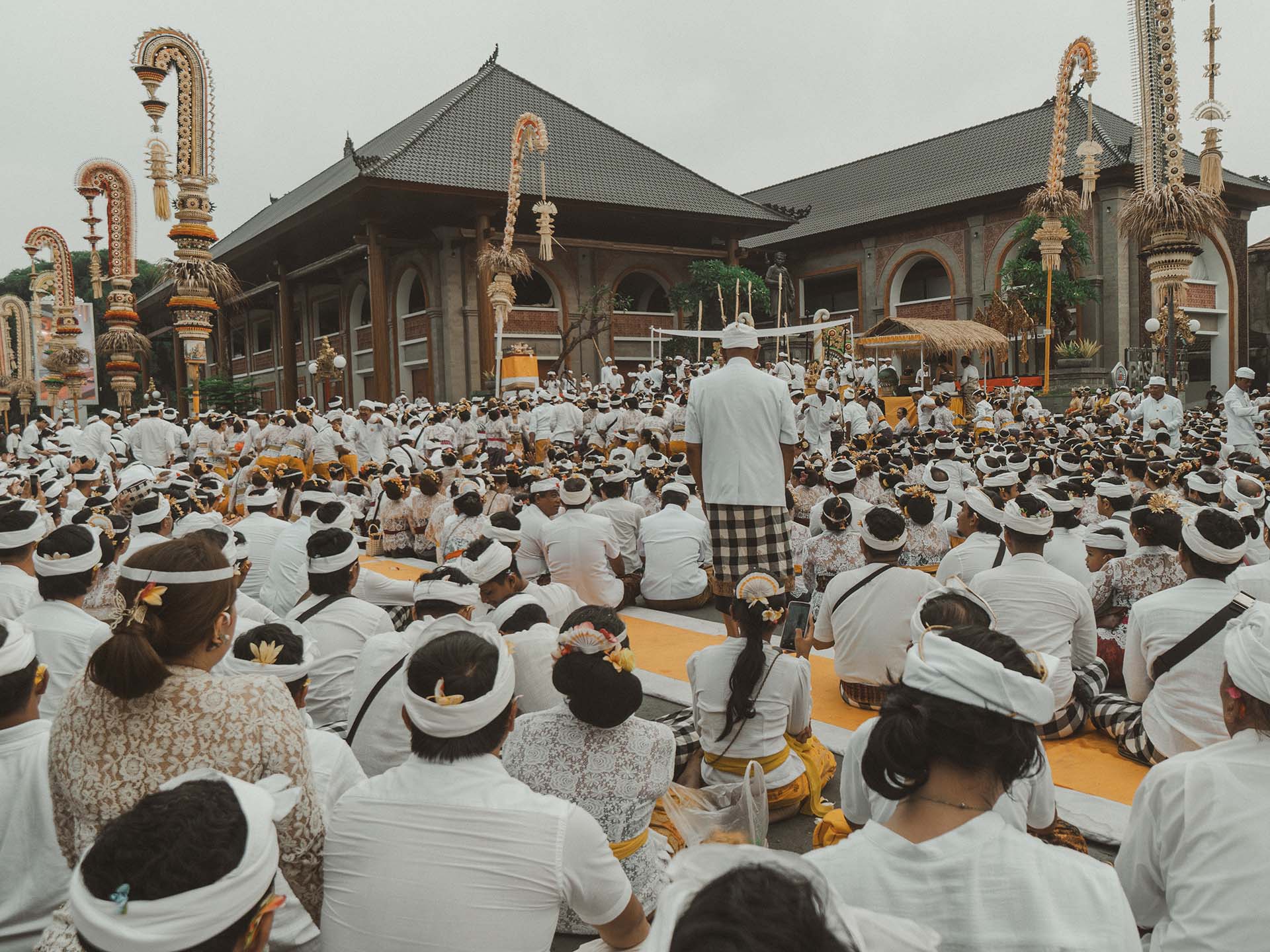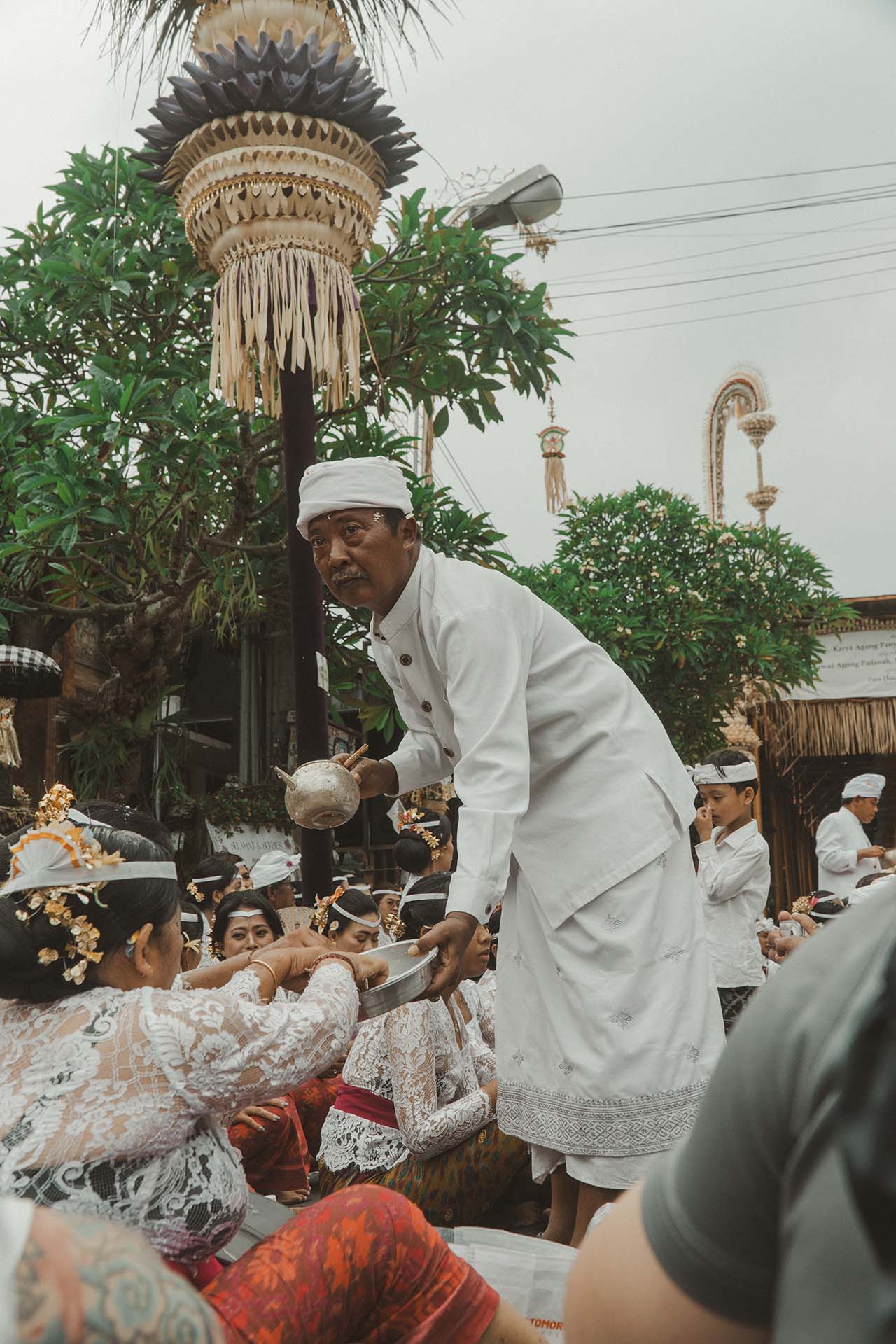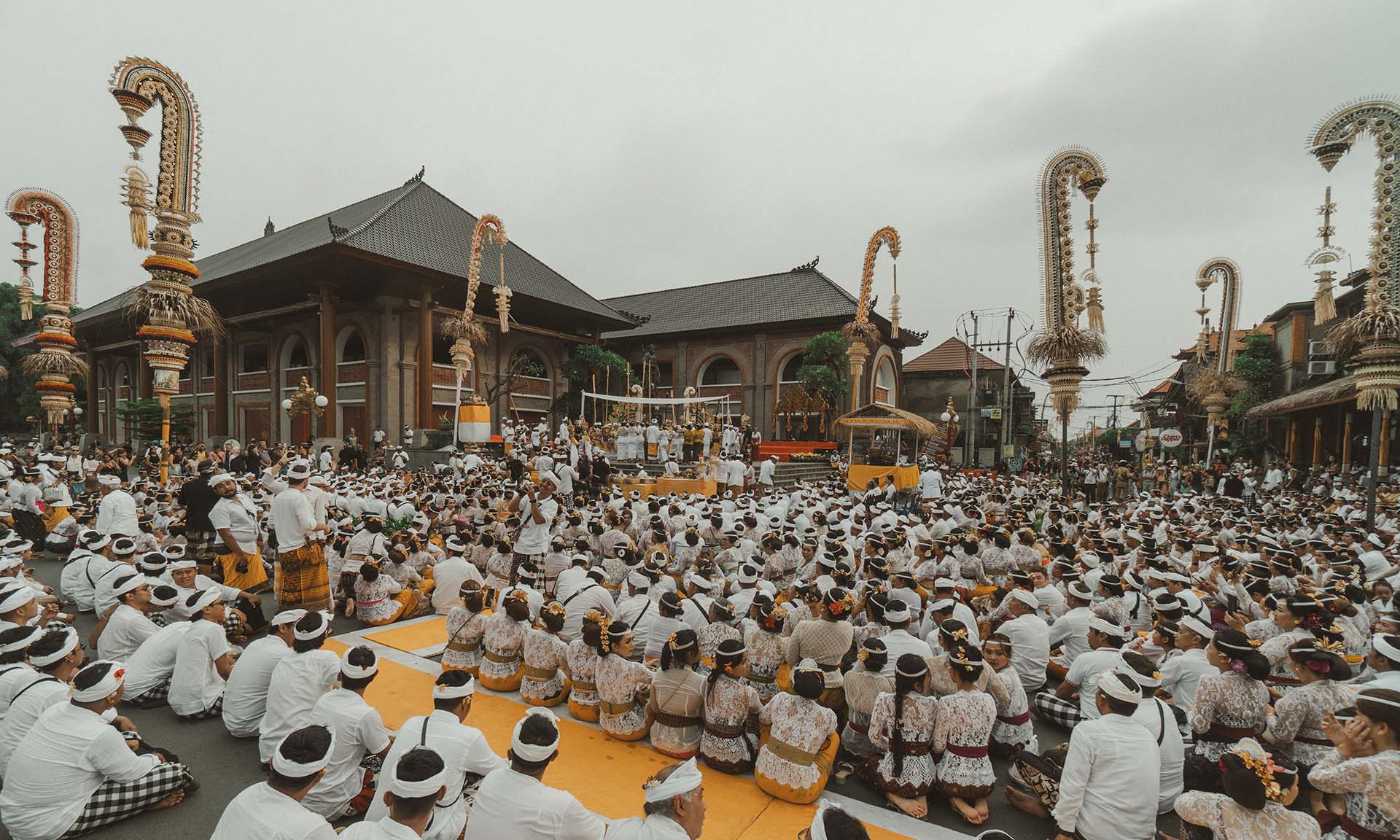In the heart of Bali, where lush valleys whisper ancient tales, Ubud awakened to the timeless rhythms of the Karya Agung—a sacred celebration blending devotion, artistry, and community in a spectacle that bridged centuries.
Text & Photography by Rio Praditia
Ubud, the spiritual and cultural heart of Bali, recently became the stage for one of its most sacred traditions: the Karya Agung. This profound ritual unfolded across Desa Adat Ubud, drawing together a tapestry of community devotion, artistry, and heritage. It wasn’t just a religious event—it was a living testament to Bali’s enduring cultural legacy and a spectacle that resonated deeply with everyone who witnessed it.
The last time Ubud hosted a Karya Agung of this scale was 27 years ago. This year’s revival carried the weight of history and spirituality, reaching the pinnacle of Balinese ceremonial traditions, known as Utamaning Utama. Overseen by the head of Desa Adat Ubud, Tjokorda Raka Kerthyasa, and supported by the participation of 13 surrounding traditional villages, the event was a monumental display of unity and purpose. Preparations began over a year ago, with intense deliberations and careful planning ensuring every detail honoured the island’s sacred traditions.
The ceremonies unfolded across Ubud’s iconic temples, including Pura Desa, Pura Bale Agung, and Pura Jati, with their timeless stone carvings and lush, sacred settings providing the perfect backdrop. The rituals began quietly on 17 October with the Nyangkling Ceremony, a spiritual precursor to the festivities. From there, the momentum grew: Caru Rsi Gana, Mlaspas, and Mapedagingan on 1 November prepared the way for the dramatic Melasti purification ceremony at Segara Masceti on 4 November. As waves lapped at the shore, offerings were carried to the sea in an ancient gesture of spiritual cleansing.
As the dates rolled closer to the main event, anticipation buzzed throughout Ubud. On 6 November, the Mapepada Alit Tawur Memben at Catus Pata brought villagers together in smaller ceremonies, followed by the larger Mapepada Agung on 9 November at Pura Desa. It all culminated on 10 November, the climactic day of the Puncak Karya Agung. Villagers, adorned in vibrant traditional attire, gathered to participate in rituals that blended spirituality with artistry. Chanting priests, intricate offerings, and the hypnotic rhythm of gamelan karawitan created a multi-sensory experience, equal parts grounding and ethereal.
Throughout the month-long series of events, the ceremonies were accompanied by traditional Balinese dance and music performances, creating a cultural showcase that enchanted both locals and visitors. For tourists, it was a rare glimpse into the intricate beauty of Balinese artistry; for locals, it was a heartfelt reminder of shared history and faith.
Ubud’s role as a cultural hub owes much to its royal heritage. The Ubud Kingdom, with its deep ties to Balinese history, has long been a patron of the arts and a guardian of traditions. The Tjokorda royal family, known for their forward-thinking vision, played a pivotal role in transforming Ubud into a centre for creativity and spirituality. During the 20th century, figures like Tjokorda Gde Agung Sukawati welcomed artists and anthropologists from around the world, fostering cultural exchange and elevating Ubud to international prominence. Today, the royal family continues to champion cultural preservation, ensuring that tourism complements rather than erodes Bali’s authenticity.
Even as the main event concluded, the spiritual journey continued. Villages came together for devotional rituals, including Bhakti Nganyarin, followed by the Nyenuk and Penyineban ceremonies on 21 November. Finally, on 24 November, the concluding Nyegara Gunung ceremony symbolised the balance between mountains and sea, bringing the Karya Agung to a graceful close.
The Karya Agung was more than a ritual—it was a profound expression of faith, unity, and cultural pride. At a time when globalisation threatens to homogenise local identities, ceremonies like this remind us of the power of tradition to ground communities and inspire all who experience it. For Ubud, the Karya Agung was a statement: this village, with its ancient temples and vibrant traditions, is not merely a destination but a living, breathing celebration of Balinese heritage. As the final offerings were made and the last note of the gamelan faded into the lush valleys, one thing became clear—the Karya Agung wasn’t just a ceremony. It was a story of devotion, artistry, and a community that continues to honour its past while embracing its future.
